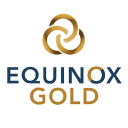The Red Lake Advantage: Geology, Infrastructure & Opportunity
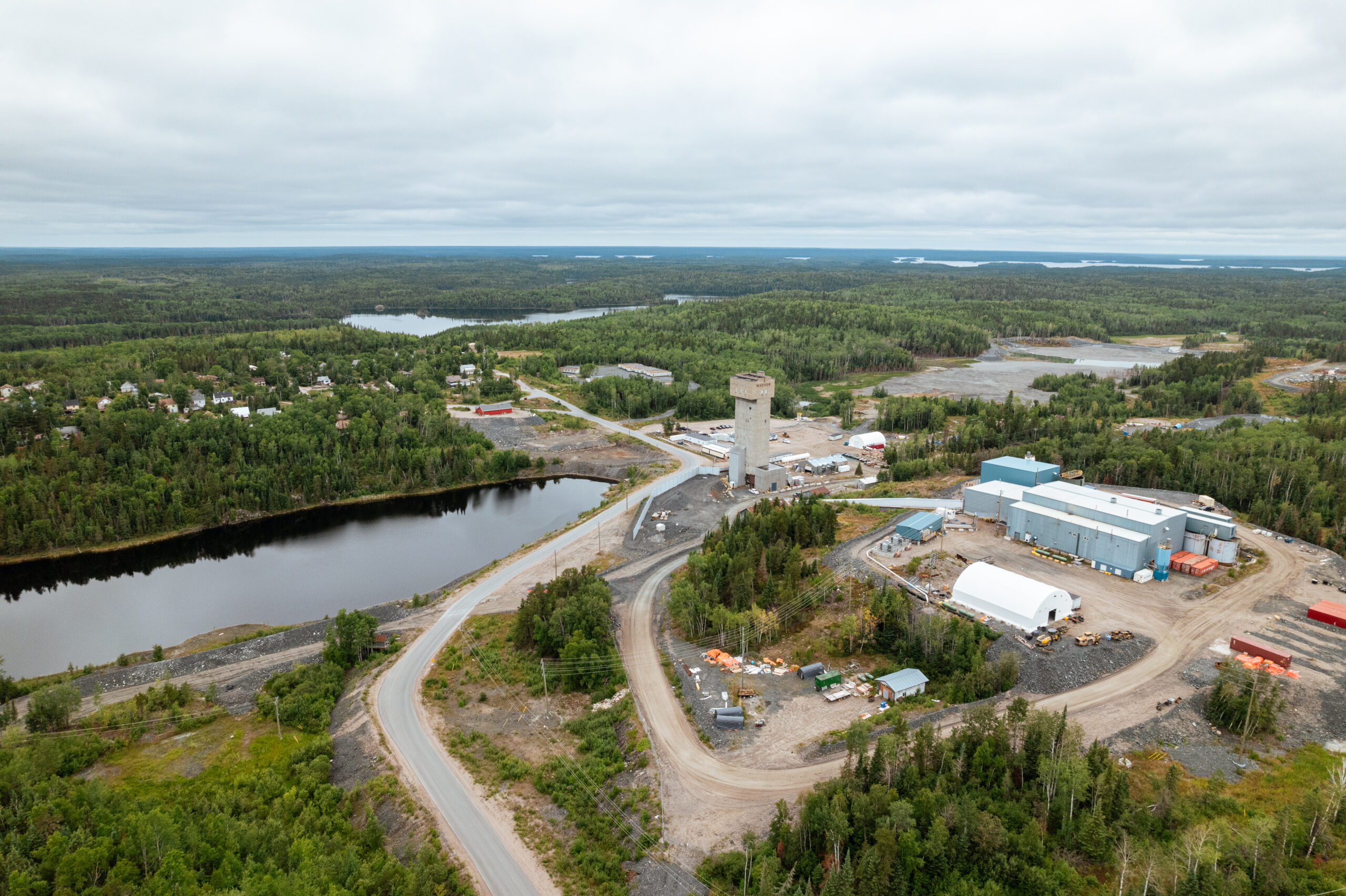
Discover the geological riches, thriving mining companies, and unique opportunities that make the Red Lake Mining District a world-class gold exploration and production hub.
- The Red Lake Mining District boasts a long history of gold production, having yielded over 30 million ounces to date from deposits renowned for their high grades.
- The area benefits from well-developed infrastructure, a skilled local workforce, and a supportive mining culture - key advantages for companies operating there.
- Ontario's stable political climate and clear permitting process make Red Lake an attractive jurisdiction, despite its remote location.
- While not without challenges, the district's exceptional geological potential, with opportunities for new high-grade discoveries, continues to beckon exploration and mining investment.
- Both major and junior companies, including Evolution Mining, Kinross Gold, West Red Lake Gold Mines, and others, are actively exploring and developing projects in the camp.
A Mining Powerhouse in Northwestern Ontario
Canada has long been a global leader in mining, known for its vast mineral wealth, stable regulatory environment, and cutting-edge exploration and extraction technologies. The country's mining sector plays a vital role in its economy, employing hundreds of thousands of people and attracting billions in domestic and foreign investment.
Within Canada, one region that truly stands out for its world-class mining potential is the Red Lake Mining District in northwestern Ontario. This area has captivated the mining industry for nearly a century with its exceptional geology, rich gold endowment, and track record of high-grade discoveries. Today, Red Lake remains a focal point for gold exploration and mining, drawing interest from major producers and junior companies alike.
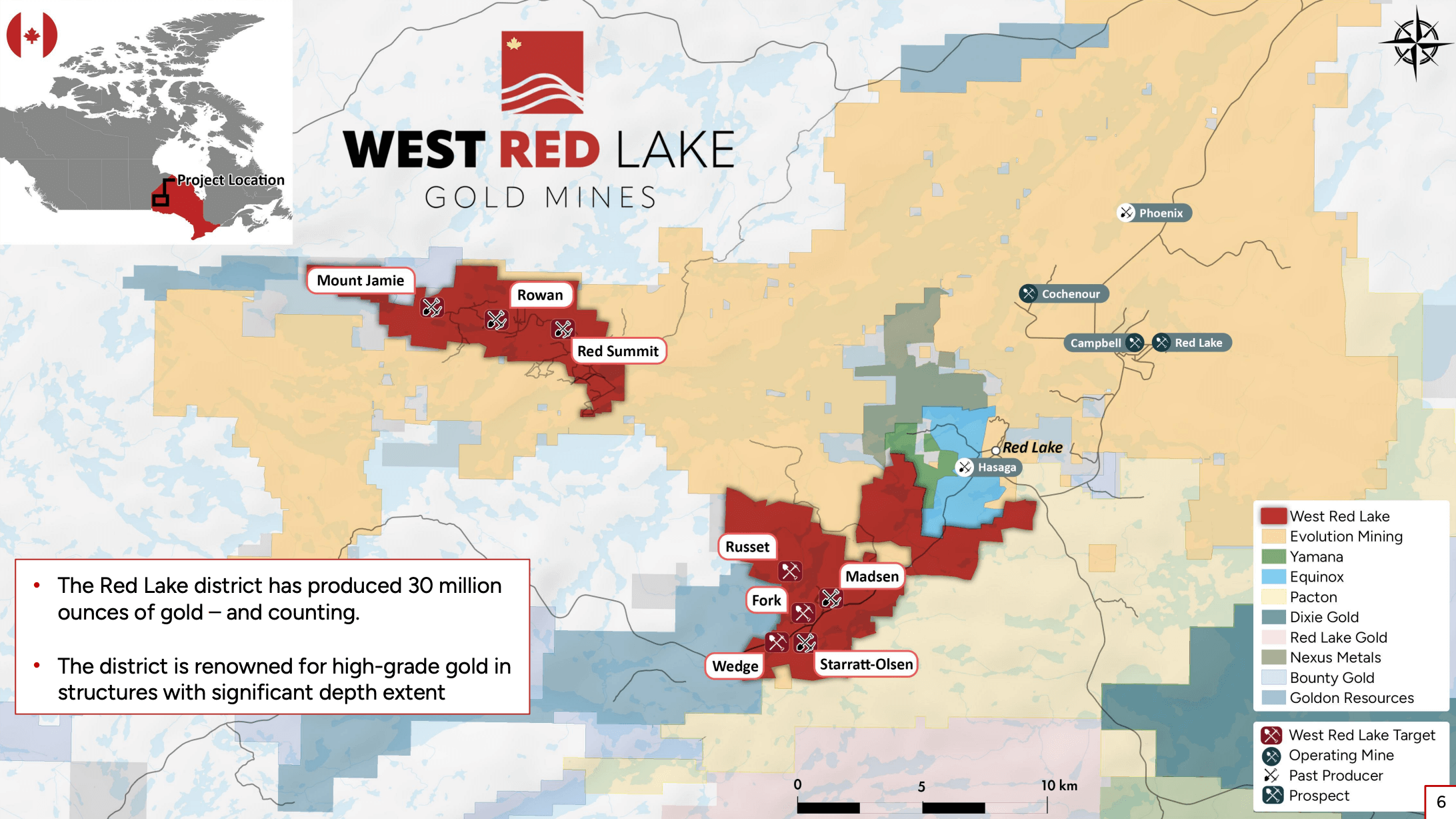
Geological Gifts: The Foundation of Red Lake's Mining Success
At the heart of Red Lake's appeal to mining companies lies its remarkable geology. The district is situated within the Uchi Subprovince, an ancient volcanic terrane that has proven exceptionally conducive to the formation of gold mineralization over its long geologic history.
The rocks underlying Red Lake are predominantly of Archean age, having formed between 2.7 and 3.0 billion years ago. This Archean greenstone belt environment, characterized by deformed and metamorphosed volcanic and sedimentary units, is an ideal host for orogenic gold deposits. The district's gold endowment is primarily associated with the significant Cochenour-Gullrock Lake Deformation Zone, a major structural feature that acted as a conduit for gold-bearing hydrothermal fluids.
Over time, these gold-rich fluids deposited their precious metal content within quartz veins and adjacent wallrock, generating the high-grade gold occurrences that have become the hallmark of Red Lake. Mineralization styles vary across the camp, from classic high-grade quartz-carbonate veins to more disseminated sulphide replacement zones, offering a range of targets for exploration.
What truly sets Red Lake apart, however, is the spectacular high-grade nature of many of its gold deposits. The district has an unparalleled record of yielding bonanza-grade drill intercepts and ore zones, with many historical and modern mines boasting gold grades in excess of 1 ounce per ton (34.3 grams per tonne). This high-grade mineralization not only allows for highly profitable mining operations but also means that even small, focused exploration programs have the potential to deliver substantial value.
With such a prolific gold endowment, it's no surprise that Red Lake has already produced over 30 million ounces of gold and continues to be a focal point for exploration and mining activity. However, the district's full potential remains untapped, with many brownfield and greenfield opportunities still waiting to be unlocked by ambitious companies.
Infrastructure Advantage: Building on a Legacy of Mining
In addition to its outstanding geological merits, Red Lake offers mining companies a significant logistical and infrastructure advantage. With a mining history stretching back to the 1920s, the district has steadily developed the transportation networks, power systems, and support services necessary for large-scale mining operations.
One of the key infrastructure components is the extensive network of roads that connect the district to major transportation routes and urban centers. Highway 105, a well-maintained all-weather road, links Red Lake to the Trans-Canada Highway, allowing for efficient supply chain management and ore haulage. The district also benefits from its proximity to the municipality of Red Lake, a well-established town that serves as a hub for the mining sector.
For companies operating in the district, access to reliable power is critical. The area is served by a robust electrical grid, ensuring a stable energy supply for mining and processing facilities. Additionally, many of the major deposits and mines are located close to existing power lines, reducing the need for costly infrastructure development.
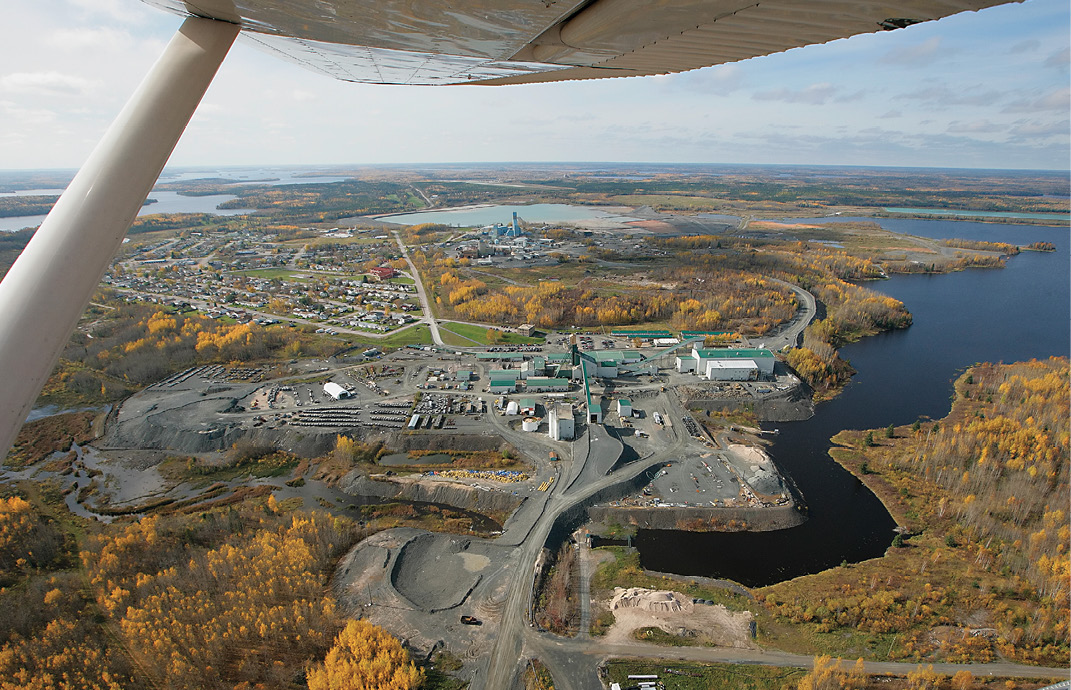
Red Lake's extensive mining history has also left a valuable legacy in the form of existing mine infrastructure. Many brownfield projects benefit from access to underground workings, shafts, and ramps, which can significantly reduce capital costs and development timelines. The district's long-standing mining tradition has also fostered a supportive network of suppliers, contractors, and service providers who are well-attuned to the needs of the industry.
Another key advantage of Red Lake's established mining presence is the availability of a skilled and experienced local workforce. Generations of mining activity have created a deep pool of talent, with a significant portion of the local population directly or indirectly involved in the sector. This human capital is invaluable for mining companies, who can tap into a ready supply of qualified personnel across a range of roles, from underground miners to geological and engineering professionals.
Permitting & First Nations Engagement: Navigating the Regulatory Landscape
Mining companies considering projects in Red Lake can benefit from Ontario's clear and well-defined permitting process. The province has a long track record of supporting responsible resource development, with a regulatory regime that is thorough but not unduly burdensome.
The primary environmental approval required for mining projects in Ontario is the Environmental Assessment (EA) process. While rigorous, the EA framework is well-established and transparent, with clearly defined requirements and timelines. Companies can also benefit from a streamlined permitting process for brownfield projects, where existing environmental baseline data and past operating history can help expedite approvals.
Ontario's Ministry of Northern Development, Mines, Natural Resources and Forestry is the primary regulator for the mining sector, overseeing permitting, compliance, and closure activities. The ministry has a strong presence in Red Lake, with local offices that can provide guidance and support to companies navigating the regulatory process.
First Nations engagement and consultation is another critical aspect of the permitting landscape in Red Lake. The district falls within the traditional territories of several First Nations, including the Lac Seul First Nation, Wabauskang First Nation, and Pikangikum First Nation. Mining companies operating in the area have a duty to consult and accommodate these communities, in accordance with provincial regulations and best practices.
Successful companies in Red Lake have prioritized building strong, mutually beneficial relationships with First Nations partners. This includes involving communities in project planning and decision-making, providing training and employment opportunities, and supporting local businesses and infrastructure development. By taking a proactive and respectful approach to Indigenous engagement, mining companies can foster a social license to operate and contribute to the long-term economic development of the region.
Challenges & Opportunities: Thriving in a Remote Frontier District
While Red Lake's many advantages make it a highly attractive destination for mining investment, companies operating in the district must also navigate a set of unique challenges. Chief among these is the remote location, which can impact logistics, supply chain management, and operational costs.
Red Lake is situated approximately 500 kilometers northwest of Thunder Bay and 150 kilometers east of the Manitoba border. While well-connected by road, the district's distance from major urban centers means that companies must carefully plan their transportation and shipping strategies. This can involve higher costs for fuel, equipment, and consumables, as well as longer lead times for deliveries.
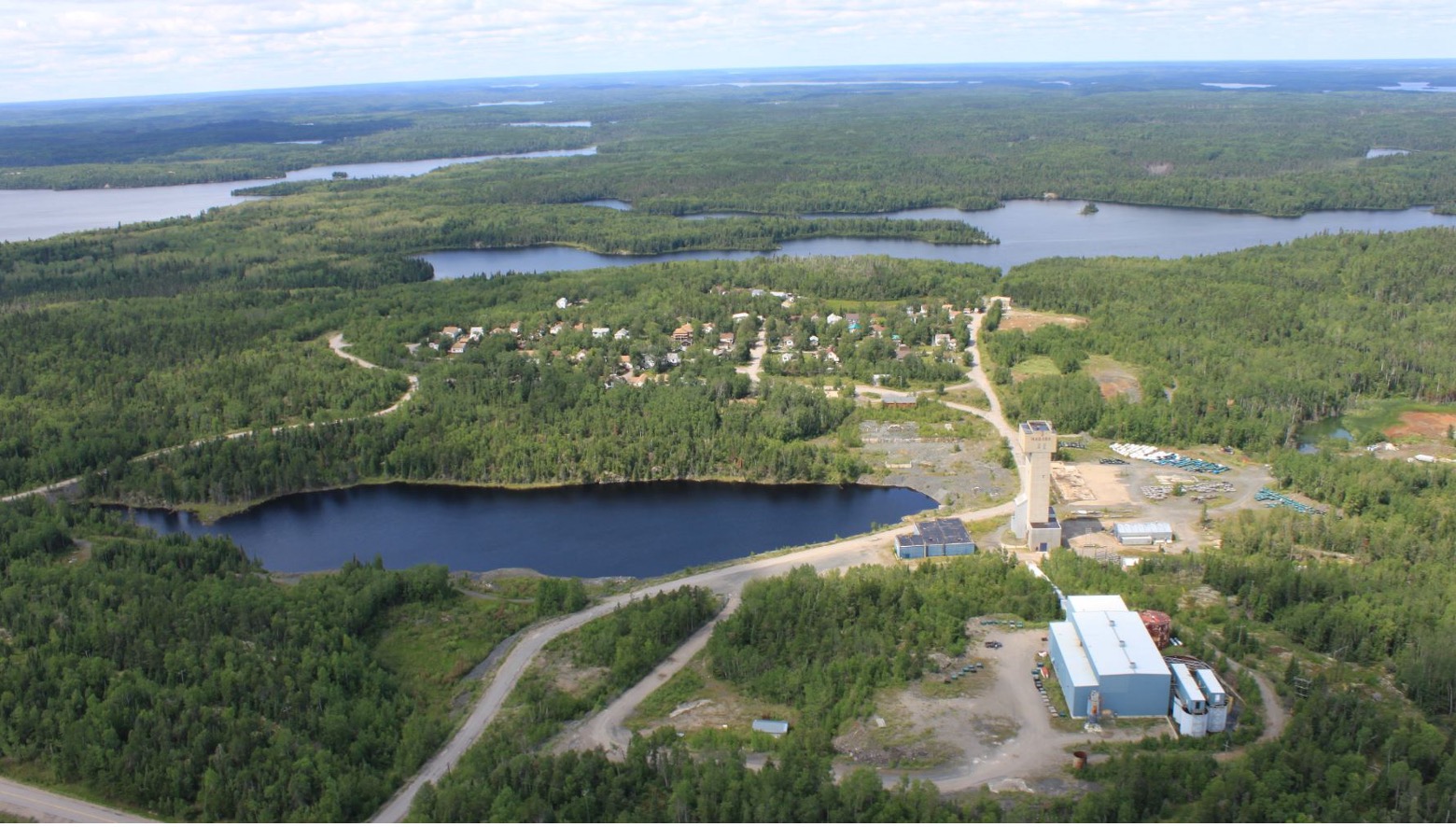
The region's subarctic climate, with cold winters and short summer seasons, also presents operational challenges. Companies must adapt their mining and exploration methods to cope with frozen ground conditions, while also managing the logistical constraints of a seasonal exploration window. Innovative solutions, such as the use of underground exploration ramps, can help mitigate some of these challenges and allow for year-round drilling programs.
Despite these hurdles, the opportunities in Red Lake far outweigh the challenges for well-prepared companies. The district's underexplored nature, combined with its proven potential for high-grade discoveries, creates a compelling value proposition for both major and junior miners.
For junior explorers, the ability to tap into a world-class gold district with extensive infrastructure and a supportive mining culture is a major advantage. The high-grade nature of Red Lake's mineralization means that even small, focused exploration programs have the potential to generate significant value. Junior companies like West Red Lake Gold Mines (TSXV:WRLG), with its promising Red Lake projects, are well-positioned to capitalize on this opportunity.
Major producers are also recognizing the enduring value of Red Lake, with companies like Evolution Mining (ASX:EVN) and Kinross Gold (TSX:K) making significant investments in the district. Evolution's Red Lake Operations, which it acquired from Newmont Corporation in 2020, is a cornerstone asset for the company, with a mine life that extends to 2031 and significant exploration upside. Kinross, meanwhile, has made a major bet on the district with its acquisition of the high-grade Dixie Project from Great Bear Resources, signaling its confidence in the long-term potential of the camp.
The presence of these major players, alongside a vibrant junior exploration scene, bodes well for the future of Red Lake. As the district continues to yield new discoveries and resource growth, it is cementing its status as one of the world's premier gold mining jurisdictions. With a potent combination of geological riches, established infrastructure, and a supportive operating environment, Red Lake is poised to remain a key destination for mining investment for decades to come.
Mining Companies Thriving in the Red Lake District
The Red Lake Mining District has long been a magnet for both major and junior mining companies, drawn by its exceptional geology, high-grade gold deposits, and rich mining heritage. Today, the camp is home to a vibrant ecosystem of operators, explorers, and developers, all working to unlock the full potential of this world-class jurisdiction.
One company making significant strides in Red Lake is West Red Lake Gold Mines. The junior explorer is focused on developing its flagship Madsen Gold Project, which boasts a robust resource base and significant exploration upside. In the words of CEO Shane Williams:
"We chose Madsen as our first project – first mine – because it offered a rare opportunity to get into production quickly, which we wanted to give investors leverage to this gold bull market. But just as important to us was the opportunity to find more gold at Madsen. Red Lake is a special place that has already produced tens of millions of ounces of gold and keeps delivering new discoveries. The Madsen land package is really underexplored. Most exploration over the last 90 years focused on near-mine opportunities, but we see opportunities all along the main break (which are already delivering for us) and in untested rock packages and structures. And working in Red Lake is a mining company's dream – the depth of experienced labour, the services, and the infrastructure couldn't be better."
Williams' comments underscore the multifaceted appeal of Red Lake for mining companies. The district's rich gold endowment and proven track record of high-grade discoveries provide a compelling foundation for exploration and development. At the same time, the well-established mining infrastructure and skilled local workforce create an ideal environment for advancing projects towards production.
West Red Lake Gold Mines is not alone in recognizing the district's potential. Evolution Mining, a leading Australian gold producer, made a significant entry into Red Lake with its acquisition of the Red Lake Operations from Newmont Corporation in 2020. The deal, valued at US$475 million, underscores Evolution's confidence in the long-term value of the district.
Kinross Gold, another global gold mining giant, has also made a major bet on Red Lake's potential, speaking to the confidence they see in the district. In 2021, the company acquired the high-grade Dixie Project from Great Bear Resources for C$1.8 billion, representing one of the largest exploration-stage acquisitions in recent Canadian history. The Dixie Project, with its exceptional high-grade gold intercepts and expansive land package, has the potential to become a cornerstone asset for Kinross in the years to come.
Evolution's Red Lake portfolio includes the Campbell and Red Lake complexes, which have collectively produced over 25 million ounces of gold to date. The company is investing heavily in exploration and optimization at these assets, with a focus on extending mine life and discovering new high-grade zones. Evolution's presence in Red Lake is a testament to the district's enduring appeal for major producers
Equinox Gold (TSX:EQX) is another notable player in the Red Lake district. The company's Greenstone Project, a 60/40 joint venture with Orion Mine Finance Group, is one of the largest undeveloped gold projects in the region. With a projected average annual production of over 400,000 ounces of gold over its initial 14-year mine life, the Greenstone Project is poised to become a significant contributor to Red Lake's gold output.
Beyond the majors, Red Lake is also home to a thriving junior exploration scene. Kenorland Minerals (TSXV:KLD) is one such company making waves in the district. Kenorland's Frotet Project, a joint venture with Sumitomo Metal Mining, covers over 39,000 hectares of prospective ground in the camp. The company's recent high-grade gold discoveries at the Regnault target have highlighted the exploration potential of this underexplored corner of the district.
The presence of these major and junior companies in Red Lake is a testament to the district's enduring appeal as a world-class gold mining jurisdiction. With its exceptional geology, robust infrastructure, and supportive mining culture, Red Lake offers a unique value proposition for companies across the spectrum, from early-stage explorers to established producers.
As these companies continue to invest in exploration, development, and production in the district, they are not only unlocking value for their shareholders but also contributing to the long-term economic vitality of the region. Red Lake's mining sector is a key driver of local employment, business opportunities, and community development, and the continued success of companies like West Red Lake Gold Mines, Evolution Mining, Kinross Gold, Equinox Gold, and Kenorland Minerals bodes well for the future of this historic mining camp.
Takeaways
The Red Lake Mining District of northwestern Ontario is a truly world-class destination for gold exploration and mining. Its exceptional geology, featuring high-grade gold deposits and untapped discovery potential, has already yielded over 30 million ounces of gold production and continues to attract investment from both major and junior mining companies.
The district's well-developed infrastructure, skilled workforce, and supportive regulatory environment provide a solid foundation for mining operations, while its rich exploration pipeline offers a wealth of opportunities for future growth. Although the remote location and harsh climate present certain challenges, the rewards for companies that can effectively navigate these hurdles are substantial.
As major producers like Evolution Mining and Kinross Gold continue to invest in the district, and juniors like West Red Lake Gold Mines advance exciting new projects, Red Lake is cementing its status as a premier gold mining jurisdiction. With a track record of success and a bright future ahead, the Red Lake Mining District is poised to remain a key driver of Canada's gold mining industry for years to come.
Analyst's Notes




Subscribe to Our Channel
Stay Informed














